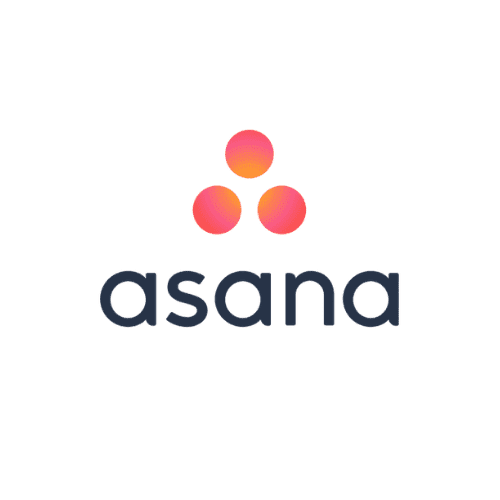- Free Version: Available for teams of up to 10
- Pricing: Premium plan $24/month (with free 30-day trial period)
- Platforms supported: Available on mobile app (iOS and Android) or a web-based software
Why Use SafetyCulture?
SafetyCulture is a powerful digital platform that can be used by industry leaders as an operations management software to streamline processes and make timely decisions in coordinating production based on collected data. Available as a web-based software and mobile app, SafetyCulture helps businesses stay on top of the team’s scheduled tasks efficiently and conveniently.
How to Use SafetyCulture as an Operations Management Software
- Convert an existing paper checklist or create one from scratch.
- You can now use your digital form anywhere using your mobile phone or tablet even while offline. You can also distribute the form to the appropriate personnel through the SafetyCulture form app.
- Once completed, the data from the digital form is automatically uploaded to the cloud to serve as your backup. If your inspection or assessment was done offline, the data will automatically sync the next time you connect to the internet.
- You can generate digital reports of your completed forms even while offline. These reports can also be distributed automatically to select personnel once a form or template is successfully completed. Reports can be exported in various formats for distribution.
- Lastly, SafetyCulture form builder can be integrated with external Business Intelligence tools such as Tableau, Power BI, and Excel Online to automate your workflow each time a form is completed.
Why Use Bitrix24?
Bitrix24 as a business management software is a unified platform that provides access to Customer Relationship Management (CRM) tools, real-time team collaboration tools, task management, and document management. It works best for teams looking for an integrated workspace for collaboration.
Features:
- Automated templates that helps save time for repeated tasks
- Tools for client communication and CRM pipeline management
- Company workspace with internal social network to communicate effectively
- Document management (file storage & sharing, synchronization with local computer, integrations, workflows for document library)
- Built-in website, landing page, and online store builder
- Free Version: Available
- Pricing: Starts at $39 per month for 5 users
- Platforms supported: Available on Web, iOS, Android, Windows, Mac, and Linux
Why Use Odoo?
Odoo is an all-in-one Enterprise Resource Planning (ERP) and operations management software that businesses use to fully automate processes. It includes tools for CRM, e-commerce, finance, project management, inventory management, and many more.
Features:
- Highly customizable and completely open source software
- Warehouse management lets you supervise multiple stock locations
- Powerful communication tools to help you keep track of processes
- Point of Sale (POS) support management for a consolidated view of operations and inventory
- Multiple apps to choose from and use those that best suit your business
- Free Version: Available
- Pricing: Standard plan starts at $7.25 per user/ per month
- Platforms supported: Available on web, iOS, Android, Windows, Mac, and Linux
Why Use Trello?
Trello is an efficient operation software and web-based project management app that lets teams customize its functionalities to meet their specific project management needs.
Trello Features:
- Butler automations let you set up rules and commands on Trello boards without complicated coding language
- Custom due date notifications that you can modify in 8 different ways
- Easy drag-and-drop editing functionality
- Labels, tags, and comments for organizing tasks
- Dark mode for mobile apps in Android and iOS is available
- Free Version: Available
- Pricing: Paid plan starts at $5 per user per month
- Platforms supported: Available on Web, iOS, Android, Windows, and Mac
Why Use Asana?
Asana is a business management software that helps teams simplify group-based work management for seamless production and coordination. Organize, track, and manage tasks efficiently and effectively.
Features:
- Offers a range of templates for popular projects you can duplicate and edit, or create and customize your own
- Use Asana’s auto-promotion feature to prioritize tasks that need to be completed immediately, and hide tasks for later to avoid distraction
- Add tasks to multiple projects without having to duplicate them
- Create quick notes and send them to relevant stakeholders using the Status Updates feature
- Set up team pages and see all your team’s projects in one place
- Free Version: Available
- Pricing: Premium plan starts at $10.99 per user, per month billed annually
- Platforms supported: Available on web, iOS, Android, Windows, and Mac
What is an Operation Management Software?
Operations Management Software is a digital tool that businesses use to streamline processes, implement workflow management, and ensure operational efficiency across all departments in the organization.
Who Uses Operations Management Software
Project managers, supervisors, operational managers, among others, can utilize operations management tools such as software to introduce a systematic approach that helps them coordinate production and service operations updates easily and increase productivity.
Benefits of Using Operations Management Software
Relying on manual processes can prove to be very difficult, especially when employees need to work remotely. It has also been reported that this can lead to the failure of some small businesses that weren’t able to quickly adapt to their industry’s digital transformation during disruptions in recent years.
One of the top benefits of using an operations management software is that it’s easily customizable to your business needs, improves transparency and accountability, and enables accurate recordkeeping.
Key Software Features
Here are some key features of operations management software to take into consideration when choosing the right one for your business:
- Production and service planning
- Scheduling
- Workforce management
- Project management
- Time and expense management
- Document management
- Analytics and reporting
- Audit management
- Web-based
- User-friendly mobile version
How to Choose the Right Software for your Business
One size does not fit all and this also applies in choosing the right operations management software for your business. There are many factors to consider including the key features you would need and other aspects such as:
- The size of your business
- The number and type of tasks that you do and the software’s ability to handle them
- The budget for the software and the plans available
When choosing operations management software, also ask the following questions:
- Would it work well with the current systems and platforms that you’re using?
- Is it easy and convenient to use?
- Is it accessible on multiple devices?





